One of the interesting things about Jharna Sanyal’s anthology of poetry The Nomadic Trail: Seventy Poems is the arrangement of the book. The cover, which is a painting by the poet herself, is followed by the title page, the table of contents, and the poems straightaway. No foreword, introduction, or preface. But at the end is an interesting postface in which the poet articulates her views on writing poetry and even shares a few stories that have led her to compose some of the poems anthologized in this collection. The readers’ engagement with the poems remains immediate and unmediated by any other piece of writing. The lone chair in front of a wooden wall in a green nook of the world on the cover is the beginning of the trail. The visual gives way to the verbal and readers straightaway enter the world of her poetry.
 The poet in the spotlight this month at Poetspeak, Jharna Sanyal is a retired professor, scholar, translator, bilingual poet, and painter. In her own words, “Poetry, reading or writing, is a journey through thoughts, ideas, words, sounds, and images.” The Nomadic Trail takes the reader on one such journey, along cities, countries, museums, mythology, art, and culture, emotions, and even technology. Each composition is a trail of the poet’s deep engagement with the world around. The first poem in the anthology, ‘A Barbecue Evening at Long Island, NY’, captures the dichotomy of two generations of the Indian diaspora – one mellowed in nostalgia, swimming in “a sea of strange sadness of success”, and the other full of the vigour of the young and new. Another poem, ‘The Backward Patio in Arlington’ too captures this anxiety of memories, a faded remembrance of ‘home/s’ left behind. The poems carry a deep and varied insight into the lives of women around her. A Nigerian nanny (Days of the Week), the ‘wizened woman of Aizawl, (Pineapples), ‘the young girl leaving for the USA for higher studies’ (Flight), Revathi Maria Gomes – the sister-in-charge of the cancer ward (Architecture of Memories), grandmothers and mothers and daughters – women populate her poems in various avatars. We even meet the ‘unwanted’ in ‘Nakushi’. They are like characters one meets on a long journey across the world. Whatever the subject be, the poems are born of deep empathy with the world around. She had once remarked, ‘I open the newspaper and it gives me the subject for poetry’. Her poems justify that. The creative artist in her comes together with the insightful human being and the poems become her medium to express love, rage, concern, and even curiosity. In the conversation that follows, Jharna Sanyal speaks in detail about her poetry, art, and the creative process.
The poet in the spotlight this month at Poetspeak, Jharna Sanyal is a retired professor, scholar, translator, bilingual poet, and painter. In her own words, “Poetry, reading or writing, is a journey through thoughts, ideas, words, sounds, and images.” The Nomadic Trail takes the reader on one such journey, along cities, countries, museums, mythology, art, and culture, emotions, and even technology. Each composition is a trail of the poet’s deep engagement with the world around. The first poem in the anthology, ‘A Barbecue Evening at Long Island, NY’, captures the dichotomy of two generations of the Indian diaspora – one mellowed in nostalgia, swimming in “a sea of strange sadness of success”, and the other full of the vigour of the young and new. Another poem, ‘The Backward Patio in Arlington’ too captures this anxiety of memories, a faded remembrance of ‘home/s’ left behind. The poems carry a deep and varied insight into the lives of women around her. A Nigerian nanny (Days of the Week), the ‘wizened woman of Aizawl, (Pineapples), ‘the young girl leaving for the USA for higher studies’ (Flight), Revathi Maria Gomes – the sister-in-charge of the cancer ward (Architecture of Memories), grandmothers and mothers and daughters – women populate her poems in various avatars. We even meet the ‘unwanted’ in ‘Nakushi’. They are like characters one meets on a long journey across the world. Whatever the subject be, the poems are born of deep empathy with the world around. She had once remarked, ‘I open the newspaper and it gives me the subject for poetry’. Her poems justify that. The creative artist in her comes together with the insightful human being and the poems become her medium to express love, rage, concern, and even curiosity. In the conversation that follows, Jharna Sanyal speaks in detail about her poetry, art, and the creative process.
NS How did the Nomadic Trail happen?
JS I love your choice of the word ‘happen’. A book is ‘published’, a baby, ‘born’, a picture ‘painted’. Each arrival has its generic marker. But accidents ‘happen’! ‘Nomadic Trail’ indeed happened! The anthology is a post-retirement happening! l had been writing poems since my college days. Some were published in The Telegraph when once it used to publish creative writing, some in Femina when Imtiaz Dharkar was the editor. This of course was the hoary past. But poetry was my private trail. Bits and scraps of poems accumulated like leaves gathered on the way.
NT happened on my last visit to the US. Suddenly, the same journey I had undertaken so many times assumed new significance, even the act of writing. So I dared to dream of a collection that would hold together some of the old and relatively recent poems covering a considerable period of time. The world is changing radically and so are our ways of reading the world. My trail still is as nomadic as it was at the beginning. It is still happening…
NS Since you talk of poetry as a trail, and a trail that is ‘still happening’, what does writing poetry mean to you?
JS ‘Writing’ as a performance, I believe, draws the body, mind, and soul together. Most of my first versions of poems are written on paper with a pen or pencil. I love the tactile aspect of this, maybe, old-fashioned mode of writing. This very physical act of writing, and the subsequent changes, doodles, crossing out lines and other such scribblings, help me track the journey of the mind, and in the process, I grow more perceptive about the world around me, both human and non-human.
Writing poetry is like having coffee with myself. It provides an open, uninhibited space where I can dare to explore, experiment with new ideas, forms. Since I am a bilingual writer, I have also experimented with Bangla and English lines in the same poem. I am happy to note that some young poets are also trying to explore the possibilities of this form. Most importantly, I find writing poetry has a therapeutic effect on me.
Places and traveling, people, nature, art, history, and mythology, and even technology become a part of your poetry. What makes you write on such eclectic topics?
The ‘nomadic is a part of my being. I take your use of ‘eclectic’ in a very positive sense of being ‘unbound’, not contained within the limits of any -ism or agenda, or specific sphere. What interests me are the intertwined strands of human existence and knowledge. An ordinary object may bring in the sweep of my perception of many worlds together. ‘The Snake’ could be an example. Myths have a special attraction for me as they can be so effectively renewed in different contexts. The Mahabharata story of Matsyagandha and Parasar can be so interestingly rewritten under the shadow of Yeats’ ‘Leda and the Swan’. Whatever is of this world, human and non-human intrigue me greatly.
NS Poems like Ctrl+u, Photoshop, Default setting intrigue me. You have used technical terms to speak of social realities. What makes you do so?
JS I have curiosity about technology, of course in no specialists’ way. But I am interested in the way the modern world is opening up through technology to such a vast fold of knowledge and also how the way of looking at things is tremendously changing. You know what intrigues me is the way technology has affected our way of life, our vocabulary, and also our perception of the world. One day at home looking at a girl wearing kajal, the ctrl+u command automatically came to my mind and that led to the writing of the poem you mentioned. These commands can be read as modern-day metaphors. You are a poet and you know the way digital mode had revolutionized the art of poetry. I do find every day the modern-day apps where you find photos with poetry and even at this age, I am so much interested in such innovations!
Another poem that you have mentioned, ‘Photoshop’ was inspired by a picture that was published in the newspaper. It was very interesting to see how the classic aura of Da Vinci’s Monalisa was brought down to the popular level and the whole portrait totally changed when the cat was placed on her lap.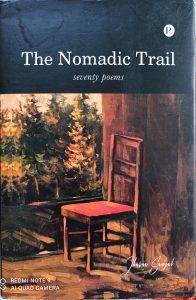
Ctrl+u
i wasn’t aware
i was in love with you,
your eyes told me.
Please don’t wear kajal
i hate it underlined.
Photoshop
Someone had photoshopped a cat
in Monalisa’s arms,- not that she
could do anything about it just as
she could do nothing about her smile.
Both stuck: the smile and the cat.
Louvre mused at the feline grace
of her mysterious smile; and da Vinci,
resting under an olive tree, mourned
art in times of digital deluge. ]
NS: There is a unique kind of detailing in your poems, an artist looking at their subject. We as your students have seen a similar keen perception while dealing with academics too. Do the two selves of painter and teacher add to the making of the poet in you?
JS You have asked a seemingly innocent question, very difficult for me to answer. I think it’s the one personality with its individual cast that is manifested in all the three selves. Long before I chose to be an academician, I wrote poems and painted, whatever the quality. This “eye” for details I think is an essential part of my nomadic self. You remind me about my academician’s life, my classrooms – I always preferred detailed readings to ‘impress’ the text upon my students. The impression had to stay and hence the details. So how can I be different when I write poems. You will see many of my poems, besides the details in the poems, have footnotes to provide references for the understanding certain significance of lines in the poem, say for example the poems like ‘The Snake’ and ‘Matsyagandha and Parasar’ to mention just two. This necessary information provided below the poems I believe helps the reader to “realise” the poems. The ‘eye’ of the reader has travelled below the lines of the poems, to the links, to the supportive stories to appreciate a total composite whole which are both the poem and the references. And I believe that the reach of such poems moves much beyond the literal lines of the poem. That is how I would like to present my poem, I don’t know what my readers would say to that. It is for you to say whether the academician has taken over.
NS You are a painter too. You have used your painting as the cover of your anthology and also recently for the book cover of a fellow poet. How do you relate poetry and painting and how much importance do you assign to the cover of a book, particularly poetry anthology?
JS: The link between poetry and painting is an old one. You remember Horace’s ‘ut pictura poesis’– as is painting so is poetry. I find the relationship between painting and poetry very interesting. I often have the painted version of an object and a poetry version of the same object, sometimes the painting comes first and then the poem. It leads me to the introspection of the creative process – how do my emotions and feelings change in two different forms. Take for example the painting on the cover of The Nomadic Trail. It started with my visit to the Finger Lakes where I saw an abandoned and lonely-looking chair on the fishing deck. Somehow the presence haunted me and when I went home, I painted the picture which you see on the cover. Later after the painting, I felt that the painting was calling for a poem, and then came the poem. Here, as I say, I am having two versions of the same reality. This makes me wonder – am I looking at the same chair or these have become three different chairs in the process. I believe that the two different versions present a whole gamut of emotions and feelings so different because of the mediums of expressions. To me, the poem and painting of the same subject are very intriguing and gives me a scope for creative introspection.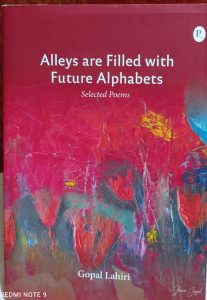
Regarding the importance of cover – I strongly believe that the cover, especially of a poetry anthology has a very significant role in the very production of the anthology, that is on the overall impact of the work. It gives you some idea of the environment, and the spirit of the content and the exterior enhances the charm of the content. It is like you are entering a beautiful building ignoring the presence of the gate. I find that a very perceptively chosen painting for a book of poems, adds to the very idea of the creative process. I don’t see the cover as different from the poems, but as the first poem – the poem before the poem, because, you know this is the first stopover where you look at the cover, ponder over the picture, and allow yourself a certain time to play with whatever the picture is trying to tell you before you open the cover. You are not beginning from nowhere; you have entered through the gate. And so the cover artist’s function should be acknowledged.
The book which you refer to is an anthology by my fellow poet and I am very honoured that he chose one of my paintings as the cover. I had a painting ‘Uncanny’, which is closely allied with the total production of his poems in that anthology. So for me, not paying enough attention to the cover is not being perceptive enough to creativity as such.
NS There has been a sea change in the publication arena from your generation to the present. How do you think it affects poetry?
JS From our time to the present, the publication of poems has undergone a revolutionary change. In our times, first of all, being Bengali writing in English was quite an embarrassing affair. Besides, after sending the poems for publication, the poets had to wait for months for the acceptance or rejection slips and in the process, many poets have lost their interest. Now the confidence level of young poets some barely out of school – publishing anthologies of poetry – is very positive. The whole rush has been sustained by the online platforms – the e-zines, the blogs, the Facebook. This provides scope for instant gratification which is very important for young poets. Also, think of the global reach now. So the situation is very positive for any creative writer. Of course, the production of poems is in profusion now. The question remains as to how many would sustain the test of time but that is another matter. That time will see. But I believe that this enthusiasm for writing poetry will indeed expand the very performative quality of poetry. I see this as something very positive.
*




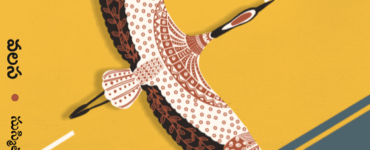

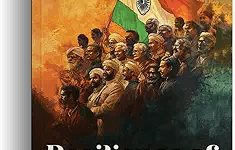
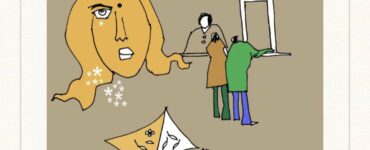
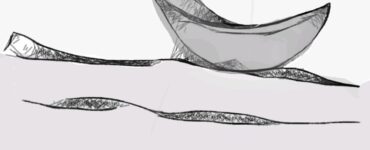
Add comment